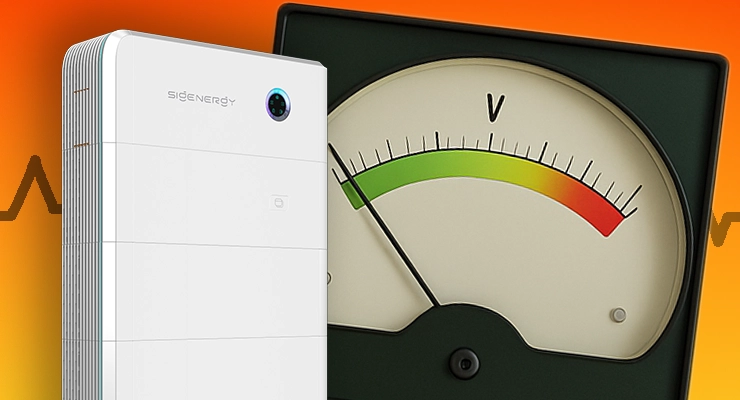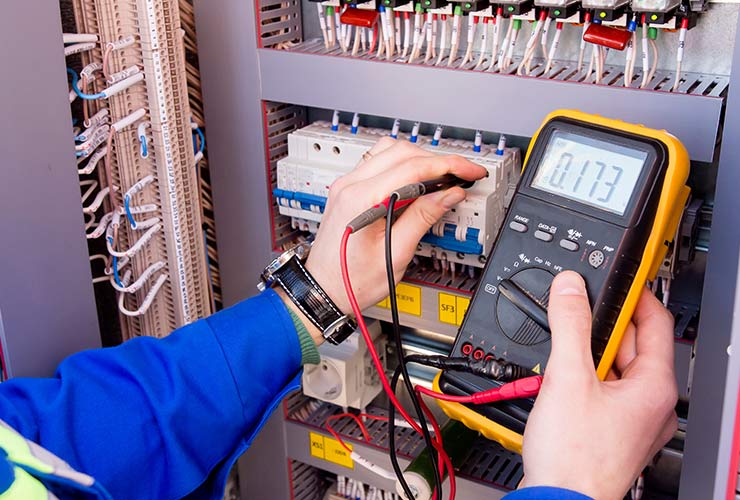Fast read
Yes, modern solar battery systems are crucial for managing voltage at home, especially if you experience issues like solar inverter shutdowns on very sunny days. The smart inverter that controls the battery can actively absorb or supply power to stabilise local voltage, preventing your system from tripping offline when the grid voltage gets too high. This ensures you can continue generating, using, and exporting your solar power, maximising the value of your investment.
Can solar batteries help with voltage regulation at home?
If you have solar panels, you might have noticed your system unexpectedly shutting down on bright, sunny days—exactly when it should be performing at its best. This frustrating issue is often caused by high voltage from the local electricity grid, and a home battery system can be an excellent solution.
As an increasing number of Australian households install solar, our local grids are being pushed in ways they weren’t originally designed for. This can lead to voltage fluctuations that affect your system’s performance. Here, we’ll explain why this happens and how a solar battery can provide the stability you need.
Why does high grid voltage shut down my solar system?
Your solar inverter’s job is to convert the DC electricity from your panels into AC electricity for your home and the grid. To send excess solar power to the grid, the inverter must export it at a slightly higher voltage than the grid itself. Think of it like water pressure; you need higher pressure to push water into a pipe that’s already full.
Under Australian Standards (AS/NZS 4777.2), the official grid voltage is 230V, with an allowable upper limit of 253V. However, on sunny days in neighbourhoods with lots of solar, the combined power being exported from many homes can push the local grid voltage close to or even above this limit.
To protect itself and the grid, your inverter is designed to automatically reduce its power output or shut down completely if the voltage gets too high (typically above 255V for a sustained period). This self-preservation mechanism, while necessary, means you lose out on generating free electricity and receiving feed-in tariff credits.
How a solar battery and a smart inverter provide a solution
A modern solar battery system is much more than just a box that stores energy; it’s controlled by a sophisticated hybrid inverter that acts as the brain of your home’s energy system. These advanced inverters can play a vital role in actively managing and stabilising your local voltage.
This is achieved through advanced functions mandated by the latest Australian standards, known as Power Quality Response Modes. The two most important modes for voltage regulation are:
- Volt-Watt Response Mode: If the inverter detects that the grid voltage is rising towards the upper limit, it can automatically reduce the amount of real power it’s exporting. By slightly curtailing the export, it helps ease the pressure on the grid and keeps the voltage within the acceptable range, preventing a complete shutdown.
- Volt-VAr Response Mode: This is a more dynamic solution. The inverter can manage “reactive power.” If the voltage is too high, the inverter can absorb reactive power from the grid; if the voltage is too low, it can inject reactive power. This action effectively stabilises the voltage at your connection point, allowing your system to continue operating smoothly even when the wider grid is experiencing fluctuations.
By having a battery, your system gains a powerful tool. Instead of just shutting down, the inverter can intelligently decide to redirect excess solar power to charge the battery. This not only avoids exporting power when the grid voltage is high but also stores that energy for you to use later, maximising your self-consumption and savings.
What are the benefits of battery-based voltage regulation?
Installing a solar battery to help manage voltage offers several key advantages:
- Prevents Inverter Tripping: The primary benefit is keeping your solar system online and generating power throughout the day, avoiding costly shutdowns.
- Maximises Solar Investment: By ensuring your system is always running when the sun is shining, you get the full benefit of your solar panels.
- Increases Energy Independence: Storing excess energy in a battery for later use, instead of exporting it, makes you less reliant on the grid and protects you from fluctuating energy prices.
- Improves Grid Stability: While the direct benefit is to you, your battery system also helps the local grid by absorbing fluctuations, making the network more stable for everyone in your area.
What to look for in a battery system for voltage support
When considering a battery, it’s the capability of the associated inverter that matters most for voltage regulation. Modern hybrid inverters from reputable brands are designed with these grid-support functions built in.
For example, manufacturers like Sungrow offer hybrid inverters that provide robust and configurable volt-watt and volt-var functionalities, allowing installers to fine-tune the system to local grid conditions. Similarly, innovative all-in-one systems like the Sigenergy SigenStor integrate an advanced Energy Management System (EMS) that intelligently manages energy flow, providing reactive power control and optimising battery charging to ensure grid compliance and system performance.
It is essential that your system is installed by an accredited professional who understands how to correctly configure these settings according to the standards and your local network service provider’s requirements.
Your next step to stable solar power
If your solar system is frequently shutting down due to high grid voltage, a battery is one of the most effective long-term solutions. It not only solves the immediate problem but also unlocks greater savings and energy resilience. By absorbing voltage spikes and storing your excess solar power, a battery empowers you to take full control of your energy generation and use.
Should you wish to explore how a specific battery system could work for your home, Your Energy Answers provides a free service to connect you with accredited local installers. They can assess your situation, check your current voltage levels, and recommend a suitably sized and configured system to ensure your solar investment performs at its peak.




